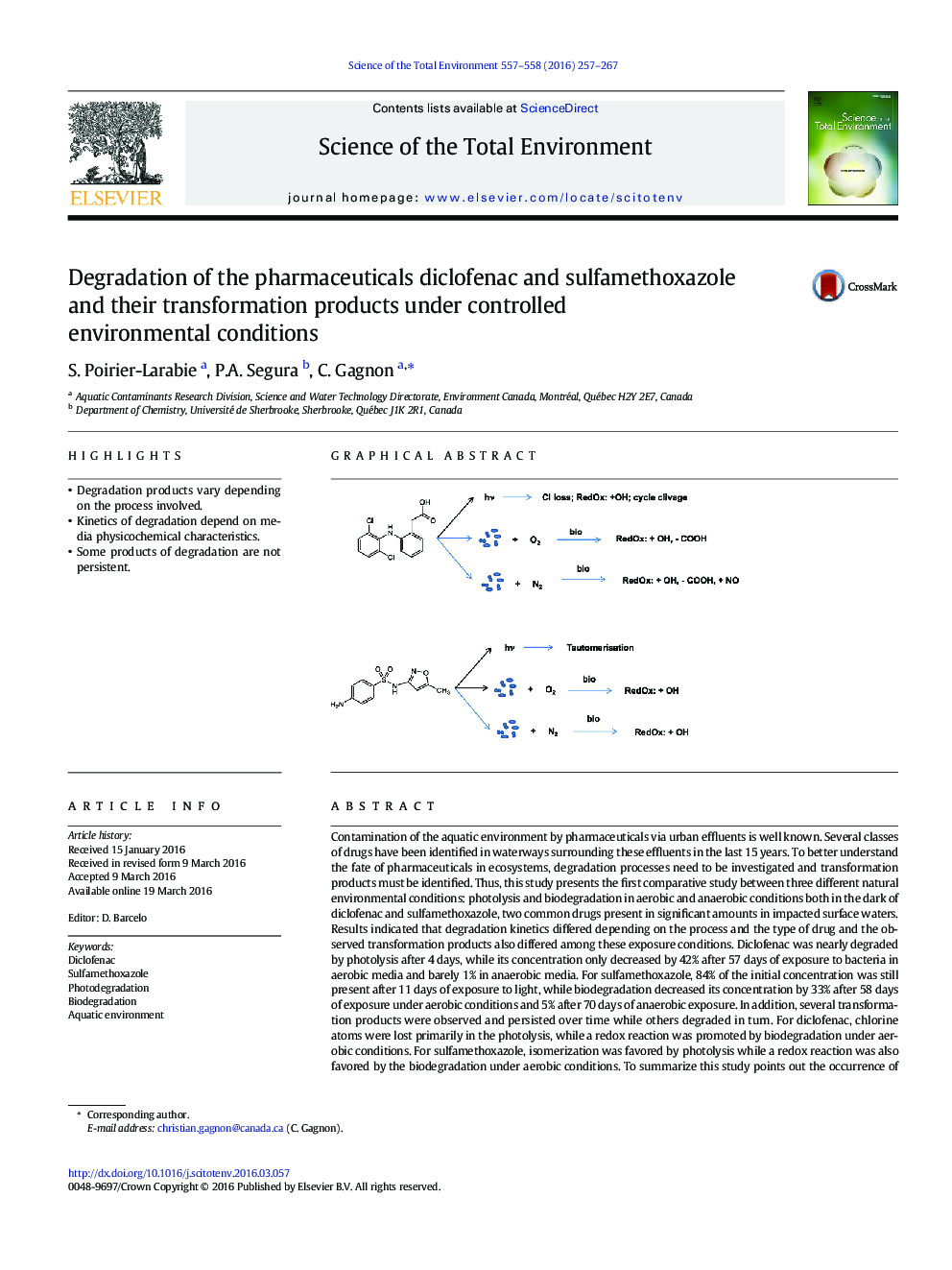| Article ID | Journal | Published Year | Pages | File Type |
|---|---|---|---|---|
| 6322471 | Science of The Total Environment | 2016 | 11 Pages |
â¢Degradation products vary depending on the process involved.â¢Kinetics of degradation depend on media physicochemical characteristics.â¢Some products of degradation are not persistent.
Contamination of the aquatic environment by pharmaceuticals via urban effluents is well known. Several classes of drugs have been identified in waterways surrounding these effluents in the last 15Â years. To better understand the fate of pharmaceuticals in ecosystems, degradation processes need to be investigated and transformation products must be identified. Thus, this study presents the first comparative study between three different natural environmental conditions: photolysis and biodegradation in aerobic and anaerobic conditions both in the dark of diclofenac and sulfamethoxazole, two common drugs present in significant amounts in impacted surface waters. Results indicated that degradation kinetics differed depending on the process and the type of drug and the observed transformation products also differed among these exposure conditions. Diclofenac was nearly degraded by photolysis after 4Â days, while its concentration only decreased by 42% after 57Â days of exposure to bacteria in aerobic media and barely 1% in anaerobic media. For sulfamethoxazole, 84% of the initial concentration was still present after 11Â days of exposure to light, while biodegradation decreased its concentration by 33% after 58Â days of exposure under aerobic conditions and 5% after 70Â days of anaerobic exposure. In addition, several transformation products were observed and persisted over time while others degraded in turn. For diclofenac, chlorine atoms were lost primarily in the photolysis, while a redox reaction was promoted by biodegradation under aerobic conditions. For sulfamethoxazole, isomerization was favored by photolysis while a redox reaction was also favored by the biodegradation under aerobic conditions. To summarize this study points out the occurrence of different transformation products under variable degradation conditions and demonstrates that specific functional groups are involved in the tested natural attenuation processes. Given the complexity of environmental samples more analytical effort is needed to fully identify new products of potential toxicity.
Graphical abstractDownload high-res image (118KB)Download full-size image
